| 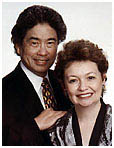 Effective
Teaching...
Effective
Teaching...
by Harry and Rosemary
Wong
December
2001
Van Gogh in
Nine Hours
Greeting you in the arrival hall of McCarran International Airport is not the glitter of neon and gold, but student art work in the form of giant murals. One of these murals is the handiwork of Jeanne Bayless and her students at Goldfarb Elementary School of Las Vegas.
She recently organized and directed another mural project. This time, 1100 square feet, all done in less than nine hours. The venture went without incident; no one fell off a ladder, no one slipped in paint, and there were no cuts, bruises, or broken bones. The mural depicts the work of Hokusai, Cassatt, Van Gogh, Cezanne, and Matisse.
To see her work, please access
www.art-ed-nevada.org/student.htm
and http://ccsd.net/schools/goldfarb/
baylessmuralproject.htm.
To create such a masterpiece is really very simple.
In our September column, we shared how an effective, beginning teacher, Sarah Jones, implemented and managed her second grade classroom. In our October column, we shared the classroom management model of Steve Geiman, a veteran and award-winning high school physical education teacher.
This month, we have the privilege of featuring a brand new teacher, Beth Hamer, who is a school librarian and Jeanne Bayless, the muralist of giant proportions.
Classroom Management in the Library
Beth Hamer is the library media specialist at Academy Central Elementary School in the Tulsa Public Schools. She learned classroom management skills while student teaching and gives much credit to her master teacher. She says that when she began her first year of teaching, she tweaked and used the following library procedures:
-
Procedure for Walking into the Room for Story Time or Instruction
Wait at the door until I greet you.
Walk quietly in the door with your hands at your sides.
Sit where I have asked you to sit.
-
Procedure for Leaving the Library After Story Time or Instruction
Wait until I dismiss you.
Walk quietly to the door with your hands at your sides.
Line up at the door in a straight line.
-
Procedure for Walking into the Room for Checking Out Books
Walk quietly in the door.
Put your library card in the cup.
Pick up a shelf marker.
-
Procedure for Looking at Books
Place the shelf marker where the book is on the shelf.
Take the book off the shelf.
Look at the book.
If you do not want to check out the book, return it to the shelf where the shelf marker is.
If you do want to check out the book, keep it in your hands.
Now take the shelf marker off the shelf.
-
Procedure for Checking Out Books
Put your shelf marker away.
Take your library card out of the cup.
Bring your books and library card up to the check out counter.
After your books are checked out, read quietly on the animal cushions until it is time for you to leave.
When asked about her success, she says,
"My procedures are working great so far. The students know that if they are not following procedures and are not listening when they come into the library that they will have to practice the procedure again. I can't help but smile when I see the younger students reminding each other to follow the procedure for coming into the library. They also teach new students the procedures for checking out books."
"And checking out books is a lot easier this year. The students know what to do when they come in small groups to check out, and they can select books without disturbing other classes who may be working in the library."
Beth Hamer is still learning and constantly works on her classroom management skills. She says, "We are still working on the shelf marker procedure, but I can already see improvement in how organized the bookshelves are staying."
Classroom Management in the Art Class
We have visited the classroom of Jeanne Bayless several times. She does not have a class of her own. Rather, each class in the school rotates into her classroom where she sees each class once a week for one hour. As each class enters, it’s the same smooth operation. The students know which table to go to. They immediately organize the art supplies on the table, ready to work. There are masking tape lanes on the floor, with arrows indicating the flow of traffic. And at the end of the hour, student work is produced and student success and achievement are evident. They leave happy and wanting to come back a week later. "Do we have to wait that long?" they plead.
Before we share how Jeanne Bayless manages her classroom, it’s important to understand her philosophy about educating creative students. She says,
I believe and know that creativity is enhanced by structure in the art room. My children are not frustrated by failure. I do not subscribe to the idea that creativity is lessened by structure, but rather creativity is strengthened and fostered by employing the procedures and routines of a well organized classroom.
Because the production of a piece of art is a process that is the result of organized purpose and intent, it must not be dismissed as uncreative and uninspired. It has long been a mistaken idea held by some that students should be encouraged to do their own thing in art classes and that to bring structure to the art experience may stifle creativity.
I really do feel that students actually have greater freedom to create when they have an organized and structured classroom and when they have a set of procedures and routines that help them stay focused on the projects and activities at hand. Secure in practiced routines and knowledgeable of consistent expectations, the students can use the time saved not having to worry about or ask piecemeal "housekeeping" type questions. The time and energy saved is evident especially in production activities where every minute counts.
Because the classroom is managed and structured, the child can work easily within consistent expectations and he or she can use the creative potential that is surely there.
For every activity there is a procedure or routine--from how to carry water using a "one-way" street (so no one spills) to how to wash out a brush when changing paint colors. The students are shown how--then they practice the procedures--until they are ready to create.
Each year, whether a student is new to the class or is a returning student, Jeanne Bayless spends time going over the ways in which the classroom can run like a "real" art studio.
Jeanne Bayless has discovered that whenever she tries to shortcut the procedures or bypass the practice that is so necessary, the class becomes chaotic, noisy, or the lesson falls short and the students’ work is pretty mediocre. As a result, by the end of the day, she says, "I am the one that usually suffers the most. It’s like a bus speeding down the highway without a driver at the wheel. We never know for sure where we’re going and the ride is pretty bumpy. We are inclined to arrive at dead ends. It is at those times that I have had to slap myself and say ‘Silly me, I knew better than that...I guess I best get back to what works.’ I get back into the driver’s seat, put the brakes on, restart the engine and take the old tried and true road. It might sound corny, but it gets us easier to and faster to where we want to arrive every time."
Knowing this, at the beginning of each new year with students going to new classes and teachers, the students are reassured in some ways that things are consistent in their art class. This does not mean she skips the "drill." She has her students revisit the "agreements" and practice the routines. Then they make really great art. And this is how she does it.
Greeting at the Classroom Door and Entrance Routines
There is a consistent, school wide procedure for walking through the halls at Goldfarb Elementary and the students, themselves, teach this procedure to the new teachers and the substitutes. Yes, that’s right! The students know the procedures so well and the procedures are so much a part of the school culture that the students teach the procedures to the new teachers and substitutes.
Before class the students line up in the hallway near the art room door as this is where class time actually begins. Here is where Jeanne Bayless greets her students, compliments them, and reminds them to ready themselves. She tells her students to
-
Have our bodies and minds under control;
-
Listen with our eyes as well as our ears ("All eyes on me please, that way I will know that you are listening.");
-
Think back about what we learned last week in art; and
-
Use our short time wisely by following art class routines so that we can spend most of the short time we have together learning about or making great art.
At each table is a small tray with laminated name tag cards color coded with the table color and a small white "tent card." Students enter the room "quickly and quietly" (as previously rehearsed) and using a felt tip marker, print their first name and place it as a standing tent card in front of them. They place the tray and can of pens out of the way usually without further cueing. This is a wonderful help for substitutes and is a complement to formal seating charts, which can be cumbersome in lively classroom discussions or during a particularly active "teaching moment."
One Way Streets
Because two regular classrooms are often joined together to participate in art class with up to 42 or 43 first or second grade students in each 50-minute period, the foot traffic situation has been organized to have an easy flow of movement in the crowded art room.
A permanent marker is used to draw large arrows on the floor to delineate "one-way" streets. Masking tape can also be used to create lanes. One way streets are especially helpful when supplies are passed out or put away by table captains. "Crashes" with students carrying cans of dirty water, drippy paint brushes and other messy materials are avoided by the fact that everyone is moving in the same direction. There are no cross streets, and "stop signs" are provided at the sink and other important areas to prevent "bottle necks" and "head-on collisions." Students understand and have agreed upon the need for traffic rules in the classroom. This has saved hours over the years in time lost due to spills and accidents to students and their clothing.
Table Identification, Addresses, and Duty Assignments
Because the school is located in an area of Las Vegas called the Orchards, each table is designated by an Alexander Calder style mobile in the form of a colorful fruit. Each table has a color-coded folder for collected student work with a numbered address for each student resident. A number in a circle is inked directly onto the table at each seat.
Table jobs are assigned by the numbered address during class and especially during clean up. For example, students sitting at #1 are table captains who facilitate or check final clean up, #2 collect student work, #3 wipe name tag cards and put away, #4 wipes table, and #5 checks the floor. The jobs rotate through the numbered addresses throughout the year.
Depending upon the size of each class, one or two students are chosen as studio assistants to carry out duties specific to particular art production activities. They are chosen at random and not as a reward.
Practiced Routines for Specific Art Production Activities
Precious art production time is saved by spending extra time at the beginning of each demonstration breaking down into three or four specific and sequential steps such common activities as the following:
-
How to correctly rinse out a water color brush without splattering a neighboring student (Stir the brush in water, gently squeeze out the paint. "Stir and squeeze. No tapping please.");
-
How to cut curves in paper (Turn the paper, not the scissors.);
-
How to use a ruler correctly to draw a straight line (Younger students and their "sidekicks" work together to develop their fine motor skills; one holds the ruler in place and the other draws the straight line);
-
When, where, and how to consistently label each piece of art work ("On the back, top left, first and last name, grade underneath, year around track under that," becomes a mantra.);
-
How to carry and dump water cans for accident free success and a safe sink area ("With one hand on the side and one hand firmly on the bottom, away from the chest to prevent spills on clothes or floor.");
-
How best to stay clean in art class (Roll up - not push up - long sleeves and keep our chests and tummies off the tables in use.); and
-
How to use a stapler correctly; how to carry objects of wet clay; how best to wash and rinse hands quickly; and so forth.
The list is virtually endless. Jeanne Bayless even demonstrates, and the children practice, how to carry a chair safely from place to place when it is necessary to reconfigure the room for special viewings or demonstrations--and how, where, and how high to stack them at the end of the week.
Jeanne Bayless emphasizes,
"Each procedural activity has a practical, time saving, safety ensuring element to it that fosters and enhances the creative process. By confidently following simple routines in the housekeeping aspects of art production, students are freed from unnecessary frustrations, insecurities and accidents--and are able instead to focus their energies on the creative process."
Art Class Routines Prior to Dismissal
At the beginning of each school year, the Ending of Class routines are explained and practiced diligently with as much time spent on them as any other art class activity. The process is fine tuned as the year progresses and the payoff is evident on those occasional times when the clock suddenly becomes the menace.
Using a simple cue of "Give Me Five," the students quickly and quietly perform the following:
-
Collect and store classroom supplies;
-
Clean and straighten up table areas according to their job descriptions;
-
Clean themselves if necessary;
-
Stand behind their pushed in chairs listening for final words from the teacher to bring closure to the day’s lesson; and
-
Line up in an orderly fashion when asked to without further directions.
Before the class is dismissed, praise is offered for their efforts and improvement both creatively and procedurally. Jeanne Bayless waits for everyone’s ears and eyes once more to single out individual efforts with the "Golden Apple" award going to one or two students in each class. These awards are given for at-table cooperation and team work with a "thumbs-up" gesture or verbal acknowledgment.
Whole classroom effort is student-evaluated with a quick vote, followed by appropriately earned praise, written or verbal, given to their regular classroom teacher. This ends with a genuine "Thank you" and "See you next week."
By ending the class with an orderly routine, the effective teacher, in effect, sets up the next meeting with future positive expectations.
Authentic Success
Here are some of the recent successes from the art students at Goldfarb Elementary School:
-
Last year, 58 works of Haiku poetry, written and illustrated in art classes were chosen in competition for publication in a national young poets anthology.
-
Goldfarb student artists swept the district-wide Nevada Housing Authority student art competition and exhibition with 27 of the approximately 50 pieces of art shown and received top honors and winners at most grade levels.
-
Goldfarb student artists walked away with a third of the pieces shown in the Fire Safety competition and exhibition, again garnering honors in many grade levels.
-
An exquisite show of 59 self-portraits and watercolor illustrations was recently displayed at school district offices.
-
The American Institute of Architects sponsored an exhibition of "Dream Homes," where the works of five Goldfarb students were juried into the show of only 25 works to be shown.
These successes are the result of spending much time on establishing classroom procedures. Without the time spent on what seem to be minute details and practiced "dry-runs," very little learning would take place. There would be no time to finish a project, the room would be a mess, and the students would not be able to create anything original and unique to their personal development.
Creating Your Classroom Masterpiece
Establishing clear and precise classroom procedures and practicing, practicing, practicing them is the same in concept as to why sport teams drill and choirs rehearse. For this very reason, Pam Ware, award-winning high school drama teacher in Gainesville, Georgia (See page 12, The First Days of School.) is able to produce and direct 13 shows each year.
Without fail, even the most challenged or challenging students will do well with classroom responsibilities when given clear directions and time to practice their duties. Students will succeed when they are provided with a consistent environment where simple, clear procedures are practiced and maintained. This is the atmosphere that encourages and supports the highest achievement in each and every student--in each and every subject.
Perhaps the greatest sculpture of all time is Michelangelo’s David. The stone selected for David came from a quarry of discards. Yet, Michelangelo saw potential in the stone, in spite of the chiding by fellow sculptors.
Upon the creation of the magnificent masterpiece, his colleagues asked how he managed to create such a remarkable work of art out of such an ordinary stone. He said that David was always in that piece of marble. He just needed someone to release him.
We firmly believe you have the tools and skills needed to craft a masterpiece. Your classroom is a quarry full of Davids waiting to be released. You can see what others have failed to realize--the full potential in each of your students. Reveal the magnificence in each child. . . .
Find the David that is YOU!
 For a printable version of this article click
here.
For a printable version of this article click
here.
Harry & Rosemary Wong products: http://www.harrywong.com/product/
Email Harry Wong: harrywong@teachers.net
Gazette Articles by Harry & Rosemary Wong:
If you spot a link that appears to be out-of-date, please alert us at webmaster@teachers.net!
- A Grateful Goodbye After 15 Years (Jun 2015)
- Love, Marriage, and Babies, Oh My! (May 2015)
- Retention Rate Is 100 Percent (Apr 2015)
- Teacher Effectiveness and Human Capital (Mar 2015)
- Training Teachers to Be Effective (Feb 2015)
- Making Deals Is Ineffective (Dec 2014 / Jan 2015)
- Retrieving and Carrying Electronic Devices (Nov 2014)
- Sharing to Succeed (Oct 2014)
- How a University Prepares Its Students (Sep 2014)
- Effective Teaching (Aug 2014)
- Your Future Is in Your Hands (June/July 2014)
- The Classroom Management Book (May 2014)
- When Students Succeed; Teachers Succeed (April 2014)
- Teaching New Teachers How to Succeed (March 2014)
- Execute and Praise (February 2014)
- Shaping a Solid Foundation (Dec 2013 / Jan 2014)
- The Most Misunderstood Word (November 2013)
- How to Start Class Every Day (October 2013)
- Prevention: The Key to Solving Discipline Problems (September 2013)
- Planning, Planning, Planning (August 2013)
- Are You THE One? (June / July 2013)
- Practical Examples That Work (May 2013)
- A Disability Is Not a Handicap (Apr 2013)
- Totally Inexcusable (Mar 2013)
- Be Proud of Public Education (Feb 2013)
- Structure Will Motivate Students (Dec 2012 / Jan2013)
- Orchestrating the Classroom (Nov 2012)
- The Lasting Impact of Instructional Coaching (Oct 2012)
- Learning, Laughing, and Leaving a Legacy (Sep 2012)
- Twenty-two, First Year, and Legit (Aug 2012)
- A Master Teacher of Teachers (June/July 2012)
- Where Going to School Means Success (May 2012)
- A Nationally Celebrated High School (Apr 2012)
- The Highest Rated School in New York City, Part 2 (Mar 2012)
- The Highest Rated School in New York City, Part 1 (Feb 2012)
- The Importance of Culture (Dec 2011 / Jan 2012)
- You Can Teach Classroom Management (Nov 2011)
- Seamless, Transparent, and Consistent (Oct 2011)
- Coaching Teachers to Be Effective Instructors (Sep 2011)
- How a Principal Creates a Culture of Consistency (Aug 2011)
- Graduation Begins in Your Classroom (June/July 2011)
- The Inspiration of a Mother (May 2011)
- How to Be an Effective Leader (Apr 2011)
- Learning Objectives: The Heart of Every Lesson (Mar 2011)
- Even Shakespeare Had Structure (Feb 2011)
- Effectiveness Defined: It's Not a Mystery (Dec 2010 / Jan 2011)
- Surviving Without a Principal (Nov 2010)
- Achieving Greatness: Locke Elementary School, Part 2 (Oct 2010)
- Teaching Greatness: Locke Elementary School, Part 1 (Sep 2010)
- Effective from the Start (Aug 2010)
- Ten Year Summary of Articles, 2000 to 2010 (June/July 2010)
- The Success of a Culture of Consistency (May 2010)
- Training Teachers to Be Effective (Apr 2010)
- Learning to Teach, Teaching to Learn (Mar 2010)
- Turning Teaching Dreams into Reality (Feb 2010)
- Dreams and Wishes Can Come True (Dec 2009 / Jan 2010)
- Success in a State Controlled School (Nov 2009)
- Inner City Is Not An Excuse (Oct 2009)
- Exceeding All Expectations (Sep 2009)
- Teachers Are the Difference (Aug 2009)
- Nine Year Summary of Articles, 2000 to 2009 (Jun/Jul 2009)
- Teachers Are the Greatest Assets (May 2009)
- The Tools for Success (Apr 2009)
- Assessing for Student Learning (Mar 2009)
- To Be an Effective Teacher Simply Copy and Paste (Feb 2009)
- The Sounds of Students Learning and Performing (Dec 2008)
- A School That Achieves Greatness (Nov 2008)
- Boaz City Schools: Professional Learning Teams (Oct 2008)
- It Was Something Close to a Miracle (Sep 2008)
- A Computer Teacher Shows the Way (Aug 2008)
- Eight Year Summary of Articles, 2000 to 2008 (Jun/Jul 2008)
- An Amazing Kindergarten Teacher (May 2008)
- Schools That Beat the Academic Odds (Apr 2008)
- Academic Coaching Produces More Effective Teachers (Mar 2008)
- Coaches Are More Effective than Mentors (Feb 2008)
- Wrapping the Year with Rap! (Dec 2007/Jan 2008)
- The Floating Teacher (Nov 2007)
- Taking the Bite Out of Assessment—Using Scoring Guides (Oct 2007)
- Ten Timely Tools for Success on the First Days of School (Sep 2007)
- First Day of School Script - in Spanish, Too! (Aug 2007)
- Seven Year Summary of Articles, 2000 to 2007 (Jun 2007)
- Effective Teachers End the Year Successfully (May 2007)
- Training Gen Y Teachers for Maximum Effectiveness (Apr 2007)
- Classroom Management Applies to All Teachers (Mar 2007)
- Students Want a Sense of Direction (Feb 2007)
- Rubrics in Two College Classes (Dec 2006/Jan 2007)
- How to Write a Rubric (Nov 2006)
- Assessing Student Progress with a Rubric (Oct 2006)
- A 92 Percent Homework Turn-in Rate (Sep 2006)
- Effective Teachers Are Proactive (Aug 2006)
- Five Year Summary of Articles (Jun 2006)
- Hitting the Bulls Eye as a Beginning Teacher (May 2006)
- They're Eager to Do the Assignments (Apr 2006)
- The Success of Special Ed Teachers (Mar 2006)
- What Teachers Have Accomplished (Feb 2006)
- Fifty Years Ago, The Legacy (Dec 2005/Jan 2006)
- The Emergency Teacher (Nov 2005)
- Classroom Management Is Not Discipline (Oct 2005)
- A Successful First Day Is No Secret (Sep 2005)
- The Most Important Factor (Aug 2005)
- Four Year Summary of Articles (Jul 2005)
- Improving Student Achievement Is Very Simple (Part 2) (Jun 2005)
- Improving Student Achievement Is Very Simple (Part 1) (May 2005)
- Never Cease to Learn (Apr 2005)
- His Classroom Is a Real Life Office (Mar 2005)
- The Power of Procedures (Feb 2005)
- The First Ten Days of School (Jan 2005)
- PowerPoint Procedures (Nov/Dec 2004)
- The Saints of Education (Oct 2004)
- How Procedures Saved a Teacher's Life (Sep 2004)
- How to Help Students with Their Assignments (Aug 2004)
- Three Year Summary of Articles (Jun/Jul 2004)
- His Students are All Certified (May 2004)
- What to Do When They Complain (Apr 2004)
- A Well-Oiled Learning Machine (Mar 2004)
- The Effective Teacher Adapts (Feb 2004)
- How to Start a Lesson Plan (Aug 2003)
- Applying for a Teaching Job in a Tight Market - Part 2 (Jun/Jul 2003)
- Applying for a Teaching Job in a Tight Market (May 2003)
- The Effective Substitute Teacher (Apr 2003)
- A First Day of School Script (Mar 2003)
- How to Retain New Teachers (Feb 2003)
- No Problem With Hurricane Lili (Dec 2002)
- A Class Size of 500 (Nov 2002)
- Effective Practices Apply to All Teachers (Oct 2002)
- Dispensing Materials in Fifteen Seconds (Sept 2002)
- How To Start School Successfully (Aug 2002)
- Teaching Procedures Is Teaching Expectations (June - July 2002)
- $50,000 to Replace Each Teacher (May 2002)
- Even Superintendents Do It (Apr 2002)
- Impossible, No Job Openings? (Mar 2002)
- A Stress Free Teacher (Feb 2002)
- A Most Effective School (Jan 2002)
- Van Gogh in Nine Hours (Dec 2001)
- The Effective Teacher Thinks (Nov 2001)
- How a Good University Can Help You (Sep 2001)
- How to Motivate Your Students (May 2001)
- How to Recognize Where You Want to Be (Apr 2001)
- What Successful New Teachers Are Taught (Mar 2001)
- A Journey of the Heart (Feb 2001)
- The Miracle of Teachers (Jan 2001)
- It's Not the Students. It's the Teacher. (Dec 2000)
- The First Five Minutes Are Critical (Nov 2000)
- How to Start a Class Effectively (Oct 2000)
- The Problem Is Not Discipline (Sep 2000)
- There Is Only One First Day of School (Aug 2000)
- Applying for Your First Job (Jul 2000)
- Your First Day (Jun 2000)
Browse through the latest posts from the Classroom Management
Chatboard...
|




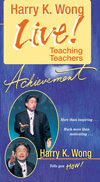
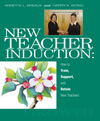
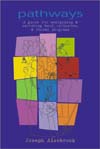


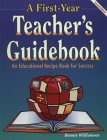
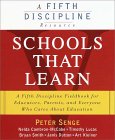

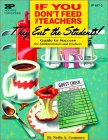
 Effective
Teaching...
Effective
Teaching...